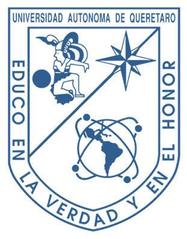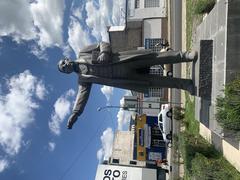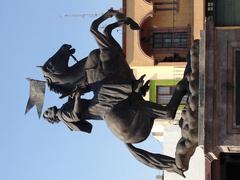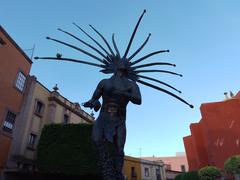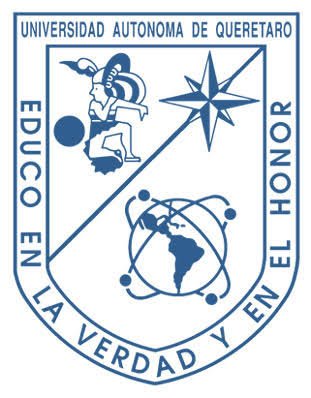
Autonomous University of Querétaro Visiting Guide: Hours, Tickets, and Campus Attractions
Date: 14/06/2025
Overview and Significance
Located in the vibrant city of Santiago de Querétaro, the Autonomous University of Querétaro (Universidad Autónoma de Querétaro, UAQ) is a renowned academic and cultural destination. Officially established in 1951, but with Jesuit educational roots reaching back to 1625, UAQ is the largest academic institution in the state and consistently appears among Mexico’s top universities in the QS World University Rankings. The university’s historic campus at Cerro de las Campanas is not only an architectural gem but also a site of immense historical importance—the place where Emperor Maximilian I was executed, marking a turning point in Mexican history.
The campus features beautifully preserved Jesuit-era buildings, lush university gardens, and the Institute of Fine Arts, which regularly hosts exhibitions and cultural events. UAQ is a hub for education, culture, and community engagement, making it a must-see for visitors interested in history, architecture, and student life.
For more information, consult the UAQ Official Visitor Information, Official Querétaro Tourism Website, and QS World University Rankings.
Contents
- Welcome to the Autonomous University of Querétaro: Why Visit?
- Visiting Hours and Tickets
- Guided Tours and Accessibility
- Campus Highlights and Photographic Spots
- Nearby Attractions in Querétaro
- Brief University History
- UAQ as a Modern Academic and Cultural Hub
- Rankings and Recognition
- Frequently Asked Questions (FAQ)
- Campus Layout, Accessibility, and Visiting Hours
- Visitor Services and Facilities
- Guided and Self-Guided Tours
- Academic and Cultural Events
- Practical Tips for International Visitors
- Transportation and Getting Around
- Dining and Refreshments
- Souvenirs and Shopping
- The Historic Aqueduct of Querétaro: Visitor Guide
- Summary and Tips
- Sources
Welcome to the Autonomous University of Querétaro: Why Visit?
UAQ offers a compelling mix of history, culture, and academic excellence. Visitors can immerse themselves in the atmosphere of the historic campus at Cerro de las Campanas, where crucial chapters in Mexican history unfolded. The campus is a living museum, blending centuries-old architecture with vibrant student activity.
Visiting Hours and Tickets
- Campus Hours: Monday to Friday, 8:00 AM–6:00 PM; Saturday, 9:00 AM–2:00 PM
- Admission: Free access to campus grounds; special events or guided tours may have a nominal fee or require advance booking.
- Where to Check: UAQ Official Visitor Information
Guided Tours and Accessibility
Guided tours are available and are highly recommended for those interested in the university’s Jesuit heritage, the significance of Cerro de las Campanas, and the evolution of UAQ. Tours can be reserved in advance through the university’s cultural office.
Accessibility: The campus is wheelchair accessible, with ramps and elevators in major buildings. Signage is primarily in Spanish, so a translation app may be helpful.
Campus Highlights and Photographic Spots
- Cerro de las Campanas: Historic hill with panoramic views and commemorative monuments.
- Jesuit-Era Buildings: Including the Colegio de San Ignacio and Antiguo Colegio Civil.
- Institute of Fine Arts: Venue for student exhibitions and cultural performances.
- University Gardens: Well-maintained green spaces ideal for relaxation and photography.
For the best photos, visit during golden hour to capture the campus and monuments in beautiful light.
Nearby Attractions in Querétaro
Querétaro’s UNESCO-listed historic center is a short distance from UAQ and includes:
- The Aqueduct of Querétaro: 74 arches, an iconic city symbol, accessible 24/7.
- Plaza de Armas and Baroque Churches: Colonial architecture and lively plazas.
- Museums: Such as the Museo Regional de Querétaro.
- Peña de Bernal: One of the world’s largest monoliths, perfect for a day trip.
Find more details at the Official Querétaro Tourism Website.
Brief University History
UAQ traces its roots to Jesuit educational institutions established in 1625. The university was officially founded in 1951 and gained autonomy in 1959 after a period of student-led activism. UAQ has since become a leader in multidisciplinary education and social engagement.
UAQ as a Modern Academic and Cultural Hub
UAQ houses faculties across a broad range of disciplines, including Engineering, Law, Fine Arts, and Natural Sciences. The university is also known for its research, cultural outreach, radio station, and vibrant student organizations.
Many public events are held throughout the year, from theatre and dance performances to language courses for international visitors (Learn Spanish in Mexico PDF).
Rankings and Recognition
UAQ consistently ranks among Mexico’s top 20 universities and is recognized in the QS World University Rankings. The university is an active participant in international academic collaborations.
Frequently Asked Questions (FAQ)
Q: What are the visiting hours at UAQ?
A: Monday–Friday, 8:00 AM–6:00 PM; Saturday, 9:00 AM–2:00 PM.
Q: Are guided tours available?
A: Yes, schedule in advance via the university’s cultural office.
Q: Is admission free?
A: Yes, general admission to campus is free. Special tours or events may have fees.
Q: Is the campus accessible?
A: Yes, facilities include ramps, elevators, and accessible restrooms.
Q: Where are the best photo spots?
A: Cerro de las Campanas, historic buildings, and university gardens.
Campus Layout, Accessibility, and Visiting Hours
UAQ’s main campus “Ciudad Universitaria” is located at Av. Universidad 940, easily accessible by public transit, taxi, or on foot from downtown (alluniversity.info). The campus is walkable, with shaded paths and rest areas. Pedestrian accessibility is prioritized, and the campus is well-equipped for visitors with disabilities.
Visitor Services and Facilities
- Information Desk: Located in the main administrative building.
- Restrooms and Cafeterias: Found throughout campus, offering affordable Mexican cuisine and snacks.
- Wi-Fi: Available in public areas; guest access can be requested.
- Bookstore: Sells UAQ merchandise, books, and souvenirs.
- Campus Museum and Galleries: Host rotating exhibitions.
Guided and Self-Guided Tours
- Guided Tours: Book in advance; typically in Spanish, but English guides can be arranged.
- Self-Guided Visits: Download maps and suggested routes from UAQ’s website.
- Photographic Spots: Main entrance, murals, botanical gardens, and the Faculty of Languages and Letters.
For more, see UAQ Contact.
Academic and Cultural Events
UAQ regularly holds lectures, conferences, art exhibitions, and music performances. The Faculty of Languages and Letters offers Spanish courses for foreigners (Learn Spanish in Mexico PDF). Major events include university fairs and Day of the Dead celebrations—check the university’s website for schedules.
Practical Tips for International Visitors
- Language: Most signage and tours are in Spanish; a translation app is helpful.
- Safety: UAQ has 24-hour security; carry photo ID and follow campus guidelines.
- Health: On-campus medical clinic provides basic care; pharmacies nearby.
- Weather: Mild, semi-arid climate (20–28°C / 68–82°F); dress comfortably and bring sun protection (Goats on the Road).
Transportation and Getting Around
Querétaro is accessible by bus, taxi, and ride-sharing apps. The international airport (QRO) is about 30 minutes from campus (Travel Mexico Solo). Bicycles and scooters are common on campus, and car rentals are available citywide.
Dining and Refreshments
UAQ cafeterias offer meals for 50–100 MXN ($3–$6 USD). The campus and nearby areas have coffee shops, juice bars, and restaurants with regional and international cuisine.
Souvenirs and Shopping
The campus bookstore stocks UAQ-branded merchandise. Art galleries and craft fairs feature student and local artisan works. The historic center hosts markets with traditional crafts and foods.
The Historic Aqueduct of Querétaro: Visitor Guide
History and Cultural Significance
Completed in 1738, the Aqueduct of Querétaro is a colonial marvel spanning 1,280 meters with 74 arches up to 28 meters high. Built from pink sandstone, it remains a beloved symbol of the city’s prosperity and is listed as a UNESCO World Heritage Site.
Visiting Information
- Location: Near the historic city center, accessible by foot, bus, or taxi.
- Opening Hours: Accessible 24/7; visit between 8:00 AM–8:00 PM for safety and comfort.
- Admission: Free; some nearby museums or guided tours may charge a fee.
- Tours: Guided walking and bike tours available through local operators and the tourist office.
- Photography: Best during sunrise or sunset; try viewpoints at Plaza de Armas and Cerro de las Campanas.
- Accessibility: Paved paths and plazas make the area accessible for all visitors.
Nearby Attractions
- Historic Center: Colonial architecture, museums, plazas, and cafes.
- Templo de San Francisco: Baroque church near the aqueduct.
- Cerro de las Campanas: Historic park with panoramic city views.
For more, see Official Querétaro Tourism Website and UNESCO World Heritage Site Listing.
Travel Tips
- Use public transport or ride-shares; parking is limited.
- Visit in spring or fall for the best weather.
- Spanish is the main language; English tours are available with advance arrangement.
Summary and Tips
UAQ offers a remarkable combination of academic heritage, cultural activities, and historical landmarks. Free campus access, excellent visitor services, and proximity to Querétaro’s aqueduct and historic center make it ideal for travelers. International visitors can benefit from language courses and a secure, welcoming environment.
Careful planning—checking hours, booking tours, and exploring nearby attractions—ensures a rewarding experience. For up-to-date information and guided tours, download the Audiala app.
Sources and Further Reading
- UAQ Official Visitor Information
- AllUniversity.info—UAQ Profile
- Official Querétaro Tourism Website
- Learn Spanish in Mexico guide
